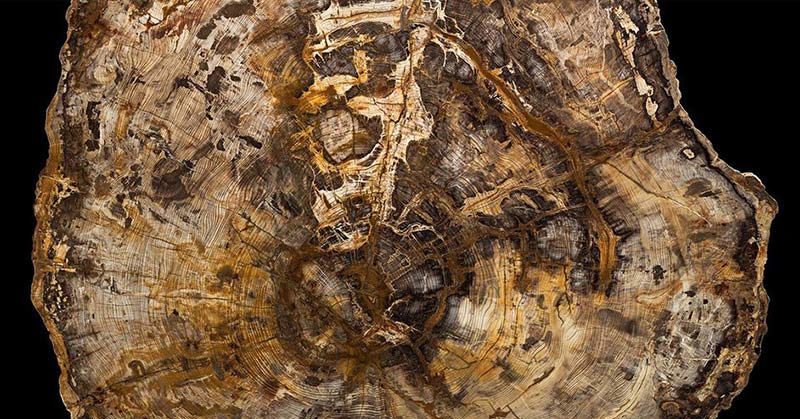As humans, we use a variety of means to give us clues about our past in order to answer questions like where we came from, and how we got here. Written records, ancient ruins, and unearthed remains of people and places have provided us with an immense amount of information to help answer some of these questions. The majority of these clues, however, only stretch back by hundreds to a few thousand years. Understanding the prehistoric past of humans and the planet is decidedly more difficult because we have far fewer relics and means with which to comprehend such an ancient time. Trees provide a unique insight into the ancient past of our planet, and the Smithsonian’s newest fossil– a 16 million-year-old tree- is doing exactly that.
A 16 Million Year Old Tree
The world-famous museum is now in the possession of an ancient slab of a sequoia tree. After carefully counting each ring of the tree, paleobotanist Scott Wing determined that the tree lived for 260 years, although he admits that may not be exactly correct.
Each ring on the sequoia’s surface represents one year of the tree’s life, so scientists can ascertain the age of the tree by counting how many rings it has. Wing says that there is always a bit of uncertainty with the count, and for this reason he would not be surprised if someone came along one day and told him he was off by a few years [1].
Trees and their delineations provide us with information on what scientists refer to as Deep Time, which is not just about counting centuries, millennia, and epochs. It is a discussion about the ongoing flow of time that takes us back to the origins of the universe in which we live.
Deep Time refers to the evolution of Earth and life up until the present day, and can be understood through the analysis of radioactive minerals and dating an ancient tree. Each piece of the puzzle contributes to the story as a whole.
How We Fit Into History
The sequoia provides us with an opportunity to think about how we fit into the earth’s history. It’s fossil, says Wing, was gifted to the museum long before he arrived on the scene, so exactly how it came to be there is not clear. Wing knows enough about the tree’s backstory to know that it was a massive tree that grew 16 million years ago in what is today central Oregon [1].
Wing says that while the Sequoia may not be the oldest fossil in the museum, the rings offer a different way to think about time. He says that when you look at the 260 rings of the tree, you can think about what that span of time actually means. For example, you can compare the tree’s life to a human life.
260 Years May Seem Long, But…
When you think about the lifespan of a human, say someone who lived a long life of eighty years, and juxtapose that with the 260 year lifespan of the tree, you can conclude that the tree lived for the course of approximately three generations of human lifespans. Humans living at the time of this tree, however, would’ve been far less developed and almost unrecognizable to modern humans.
When you look at the rings on this particular tree, Wing says you can tell that it grew very rapidly in its first one hundred years of life, and then slowed down as it got larger and older. You can also see some of its organic material still locked inside.
Wing explained that when the tree was alive, it was pulling carbon dioxide out of the atmosphere and turning it into sugar and lignans to build cell walls. After it died, water carrying silica and other materials coated the log to preserve it, protecting some of those organic compounds within it.
“The carbon atoms that came out of the atmosphere 16 million years ago are locked in this chunk of glass,” says Wing [1].
Lessons From Trees
The study of tree ring growth is called dendrochronology. This discipline is very useful because trees can teach us about many aspects of our past. Thought to have evolved around 380 million years ago, trees and their rings can provide us with clues as to the climate and conditions for each year of its life [2,3].
Understanding how climate changes in the past affected tree growth can help us understand how they might affect us in the future. While one tree alone does not provide a significant amount of information, hundreds of thousands of tree ring records put together can [3].
Having a large and comprehensive chronology for various trees in different locations around the world is fundamental to the study of paleoclimate and prehistory.
Comprehending Time
The sequoia tree helps to transport us through a timespan so large that it’s difficult to fully comprehend- a tree that represents three human lifespans, but lived 16 million years ago, represents about two hundred thousand human lifetimes.
“Time is so vast,” Wing says, “that this giant slab of a tree is just scratching the surface.” [1]
Read: Ancient tree with record of Earth’s magnetic field reversal in its rings discovered

